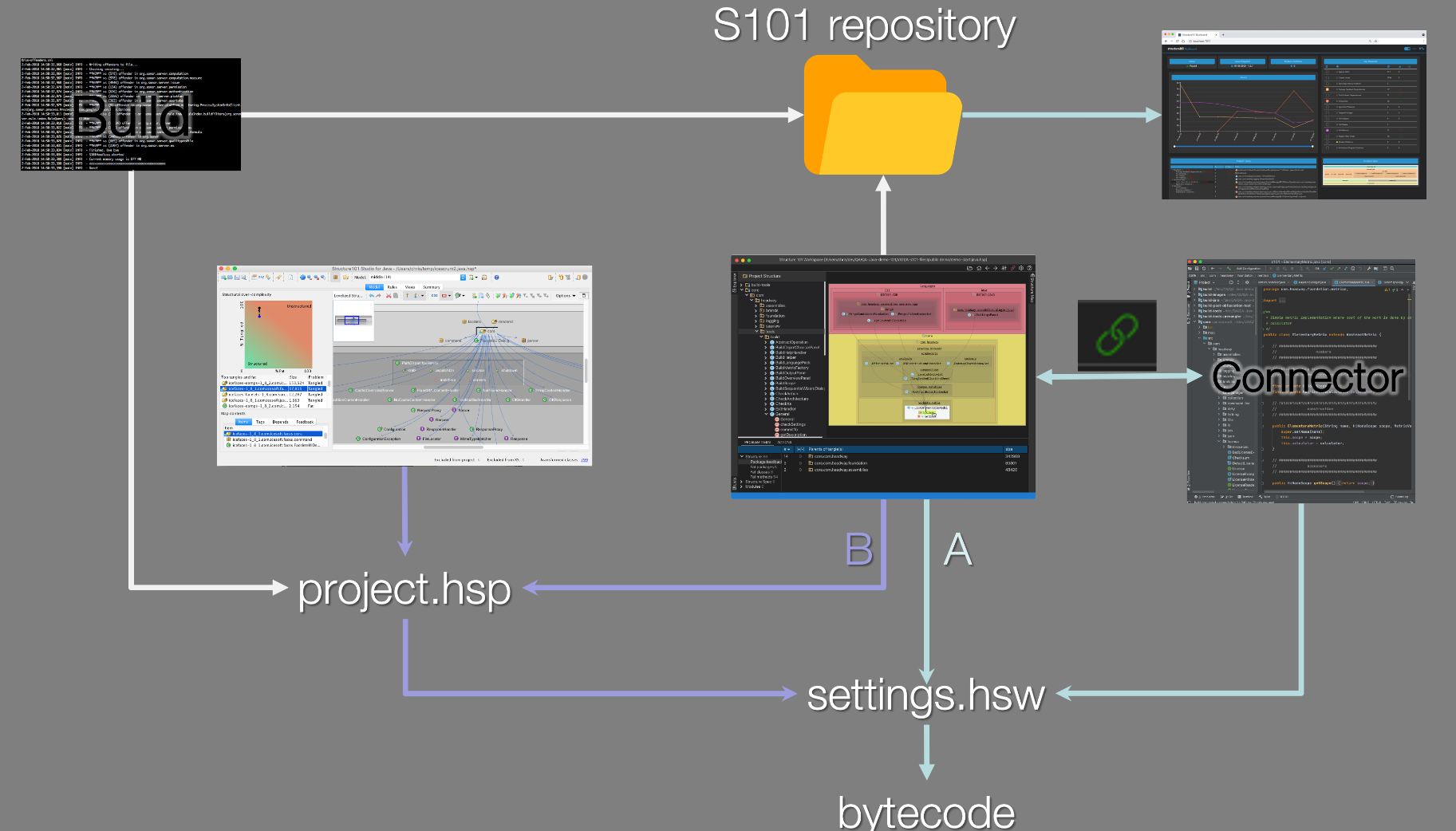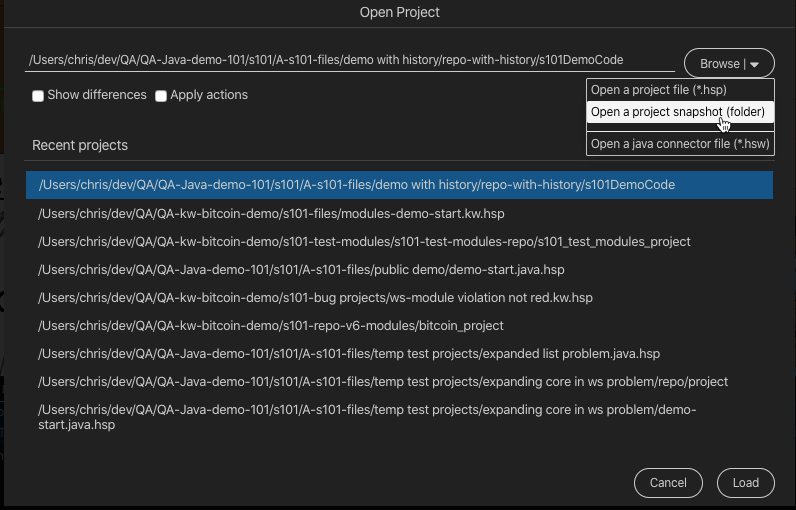For Java projects you have 3 options for the data source for Workspace:
-
Open the *.hsp project file that you saved from Studio - this may contain actions and specs that you created in Studio
-
Open a project snapshot folder - this may be "published" directly from Studio, or by Build using the Studio *.hsp project file, and will also include any actions and specs saved in the Studio project
-
Open a *.hsw Source editor settings file - this is generated by the Structure101 Connector plugin to your IDE, and keeps your Workspace model consistent with your development environment. a *.hsw will not contain any Studio actions or specs.
If you are using Studio, then the best option is to point Studio at the *.hsw, and Workspace at the *.hsp, as this keeps everything tightly consistent with your development evironment. The following diagram shows these options:

If you use the Structure101 Connector plugin to extract information about your development environment from your IDE, then you can use Workspace in a "local mode". This makes it easy to update Workspace after each code edit, and to see any structural changes resulting from the edit. You can also view the "raw" codebase without Studio in the loop at all by selecting the "(*.hsw) option and specifying the "settings" file (defined in the Connector).
When you open Workspace, you will need to locate the project file (*.hsp), or repository project folder,

Note that for repository projects, you need to select the project folder within the enclosing Structure101 repository folder. In the following example we have a repository called "A-s101-repo". As with all repositories, it contains a file called "repository.xml" and a folder for each project that has been published to the repository. The project we're interested in is called "s101proj" (there can be many projects), so we would selected the folder "s101proj":

If you are opening a repository project, you can select to show differences between the current and previous snapshots of the project. This will cause any new items and dependencies to be indicated (by color) in the Structure Map.
You can also select to apply actions. If a "shared" Action list was created for the project (in Studio), the model in the Structure Map will reflect the effect of these actions - for example to move files to new location, perhaps reflecting a target architecture.
When you're ready, click the Load button.